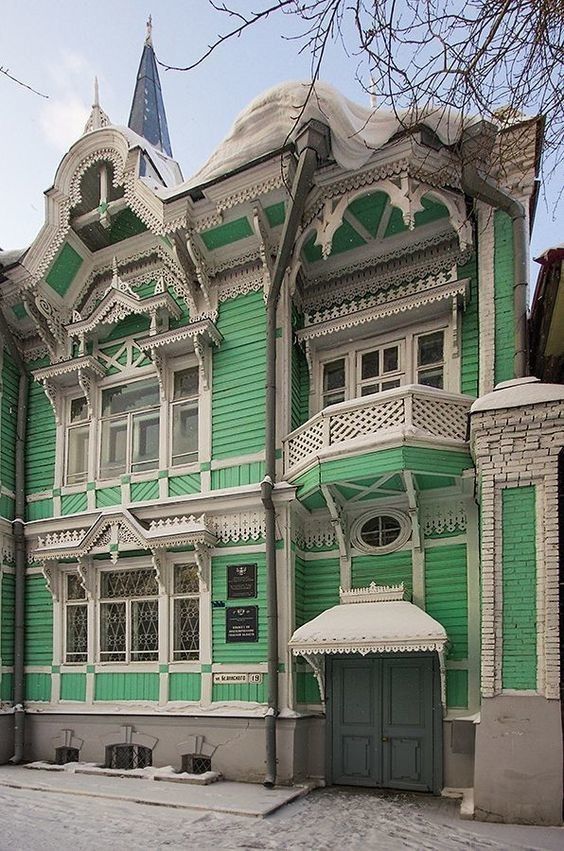#16638. Emerald Mansion with Carved Facade: A Gem of Wooden Modernism

The image showcases a magnificent example of wooden architecture in the style of Russian architecture from the late 19th to early 20th century, known as "wooden modernism" or "Russian wooden empire style." This emerald-green mansion impresses with its rich decorative facade elements and thoughtful composition.
The facade of the building, painted in a green color characteristic of traditional wooden architecture, is adorned with skillful white woodcarving. Particularly expressive are the lace-like cornices, window frames, and decorative elements of the pediments. The architect masterfully used techniques of contrast between the main color of the walls and the snow-white decor, which gives the structure elegance and expressiveness.
Note the asymmetrical composition of the facade with a protruding bay window crowned by an intricate dome. Such a solution not only gives the building picturesqueness but also expands the interior space. Windows of various shapes and sizes – from large stained glass to small oval ones – create an interesting rhythm on the facade and provide good natural lighting for the interiors.
In modern facade design, several ideas can be drawn from this historical example: playing with contrasting colors, using decorative elements to create a unique appearance for the building, combining different types of windows, and well-thought-out architectural projections that can functionally expand the interior space while enriching the exterior appearance of the house.